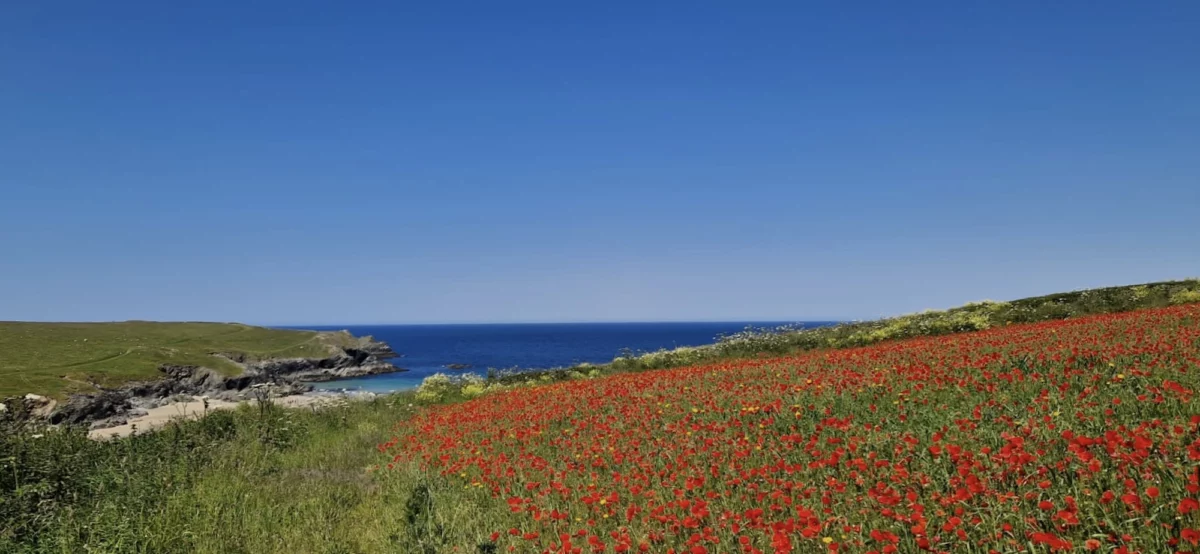- The Great Cornwall Guide
- Destinations
- Things to do
- Beach Guide
- Food & Drink
- Properties
- Journal
- Golden Lobster Reviews
- Destinations

When Cornwall is in bloom, there is nowhere more magnificent. Colours from native wildflowers embellish the coastal path, and many inland areas, too, which accent the perfect blues of the sky/sea, or the mossy greens of the moors. There’s a year-round guide here.
Cornwall has many National Trust gardens which are home to magnificently tended flowers, but often it is the wildflowers that are even more impressive. People travel for miles to see the National Trust’s wildflower fields in West Pentire, near Newquay, which are filled with glorious poppies for a few weeks each June.
Spring is the best time for wild flowers, once the snowdrops and primroses make an appearance, but beautiful blossoms also make themselves known through summer to September. Hedges, frosted with profuse quantities of blackthorn, promise sloes in autumn. As for golden gorse, it is prolific, but does it smell to you of vanilla or coconut? The debate goes on. Watch your fingers though, for the gorse is a prickly customer.
Bluebell time can be overwhelmingly glorious in Cornwall, the favourite British flower often growing alongside wild garlic (ransoms) wafting their heady aroma. But others plants are there to be enjoyed, too. Look out for the pink hedgerow Cranesbill, for example, a pretty, slightly delicate looking flower; or some sea campion, which folklore tells us should never be picked (maybe because they inhabit cliffsides).
The Cornish coastline is jewelled with distinctive thrift or sea pinks, sitting beside the azure waters of the coast. You will also see red and white clover and spring squill. Cornish Rock Tors provides a fascinating insight into wildflowers in the county.
Special secret spring walks include the 4-mile circular Hall Walk at Fowey and another 4-miler across the Helford Estuary with the Rosemullion Head Circular.
Categories: Cornwall's Plants & Flowers